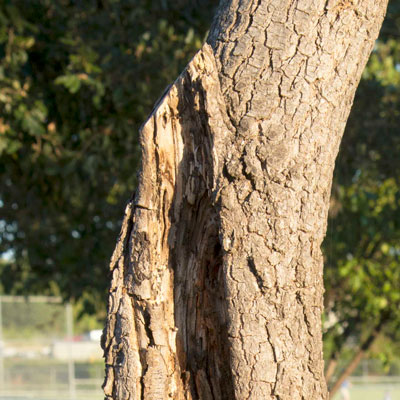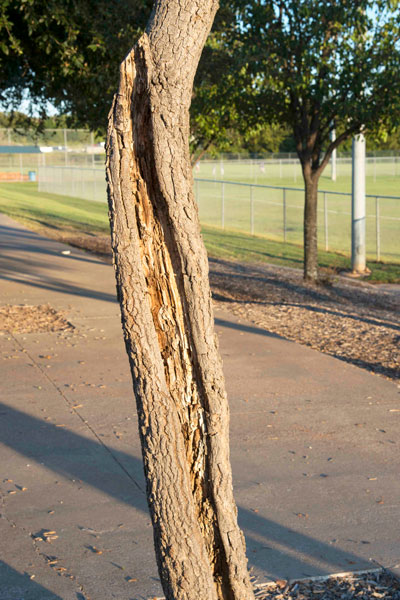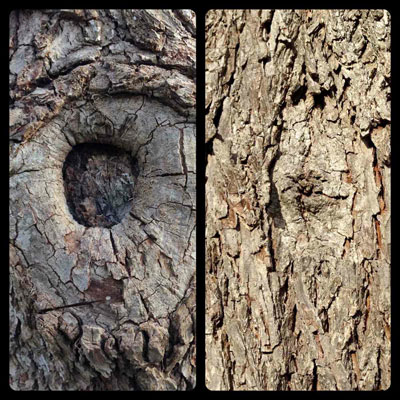Tiny Pruning Error, Huge Consequences
I’m not sure whether the main trunk of this little tree died at some point, or whether someone was trying to get rid of a bad branch angle. All I can tell now is that they left a stub when they did that original pruning.

You get some idea of the decay that set in by looking at the photo above, but until you see more of the trunk you really can’t tell how much the decay has moved down the trunk.

This is how it develops. It can start with a small limb not even as big as a broomstick. If it breaks off, or if you prune it and leave a stub in place, the tree can’t heal across it. Decay sets into the stub and soon moves down into the main wood of the trunk or larger branch.
This particular little tree is in a race for its life. There is a roll of new bark forming across both sides of the decay. At best it will have a hollow trunk. However, even if the sides of new bark do merge and close off the gaping wound, the trunk is likely to continue to decay until the weakened wood finally snaps in a windstorm. And, as you can see, the trunk is out of plumb anyway. This tree needs to be replaced. Time is being lost while all of this happens.

And your goal should be…
Just to show you how well a tree can heal if it’s pruned properly, this is what a wound should look like as the new bark grows across a cut surface. This happens in just three or four years, long before any decay can set in.
• Remove the branch virtually flush with the trunk. Leave a “branch collar” of 1/8- to 1/4-inch. Research has shown that wounds heal more quickly with the small amount of branch collar than if cuts are made completely flush.
• Aim to leave no stub extending out from the trunk or from a limb. If there are broken branches that are too high for you to reach, that’s the time to hire a certified arborist to clean the trees up. It’s a lot cheaper than having professionals come out years later to try to save a tree that has suffered catastrophic decay.
• Pruning paint slows healing across cut surfaces so it’s best not to use it in most cases. Oaks are the exceptions. Sealant lessens the chance of invasion of the oak wilt fungus.
